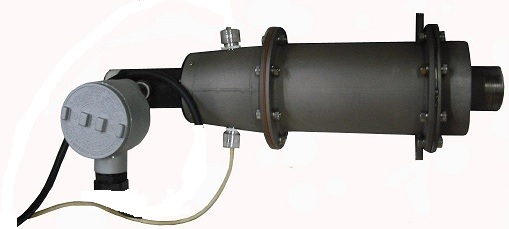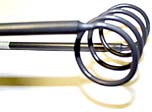Disclaimer: The articles below may be from third property sources, written during a development period, or otherwise dated. No information in the articles below may be used in any manner whatsoever to legally bind MHI or call into question an MHI product or service. For product details and current specifications, always contact MHI Inc. at 513-772-0404 or email us or visit our online form to contact MHI. _______________________________________________________________________________________ How much Co2 can I save by going electric? 1 MW will prevent 0.18 to 0.8 Tons of CO2 every hour. See more…(pdf format) Drying with steam or drying with air – a case study for clay
Clay is a term used to describe a group of hydrous aluminum phyllosilicate. Phyllosilicates are a subgroup of silicate minerals typically less than 2 µm in diameter… Fuel Cells Versus Heat Engines: A Perspective of Thermodynamic and Production Efficiencies
Fuel Cells are being developed as a powering method that may provide clean and efficient energy conversion from chemicals to work. An analysis of their real efficiencies and productivity… Equations for the Physical Properties of Moist Air
In a closed container partly filled with water, water vapor will be in the space above the water. The concentration of water vapor depends only on the temperature. It is not dependent on the amount of water and is only… Low Ionization Plasma Sources for Enhanced Aluminum Processing
Low ionization plasma melting of aluminum is shown to be effective due to the speed of melting and the highly efficient nature of the process. Additionally, the input power is low compared to the alternatives, producing no noise and no emissions… HGA output for Steam and Superheated steam
In engineering, steam refers to vaporized water. It is a pure, invisible gas (not a mist) with a temperature of around 100 degrees at standard atmospheric pressure. MHI Semiconductor Gas Abatement Physics and Principles
With the ever-growing menace of perfluoro compound emissions, MHI has pioneered an energy-efficient way to decrease these materials through a plasma process… Does convection enhance uniformity?
Very Often, the key to high productivity lies in good uniformity in the furnace/oven. As ovens become larger, this is a crucial concern. Energy efficiency and uniformity are increased by……………
Processing Materials with Forced Air Convection
Material manufacturing involves several complex processing steps, many of which use heat to accelerate drying, firing, sintering, and other operations. These processing steps are usually performed with gas or oil-fired burners in kilns or other types of equipment that often require a great deal of…
Economics of MHI PC Furnaces for Aluminum Industry(requires Macromedia flash player free from Macromedia web site)
A new PC-RAM-PLASMA™ method is the key to melting aluminum cleanly and efficiently. The low-cost plasma melting devices described in this report and the power concentration technology are the keys to…
Heating Elements: Which are the best type for me?
Manufacturers often increase their productivity and quickly recoup their initial furnace investment by choosing the proper heating elements… (a study by the National Academy of Engineers condensed for your use!!). See another article below on Productivity gains once you have identified the best heating elements. What can you do more to increase productivity? (Productivity vs. Temperature)
MHI Foams for use in Fuel Cells
Fuel cells are electrochemical devices that convert the chemical energy of a reaction directly into electrical energy. A variety of fuel cells are in different stages of development. They can be classified by use of diverse categories, depending on the combination of the type of fuel and oxidant, whether the fuel is processed outside…
Heating Elements for Higher Productivity
Experiments have shown that manufacturers can often increase their productivity and quickly recoup their initial furnace investment by choosing higher-temperature heating elements… Die Heating Comparison: Airtorch vs. Flame
The heating of the die is often the most critical start-up procedure in forging, extrusion, and pressure die-casting operations. Improper pre-heating results in various problems, the most significant being low die life on… Productivity vs. Temperature (in pdf format) Productivity vs. Temperature (in flash paper format; requires Macromedia flash player free from Macromedia website)
Heating is an essential and expensive step in almost all material processing operations. A wrong decision on heating elements may prove highly costly to productivity. Determine which element may work best for you. The first decision to be made when choosing a heating device is… | ![]()









